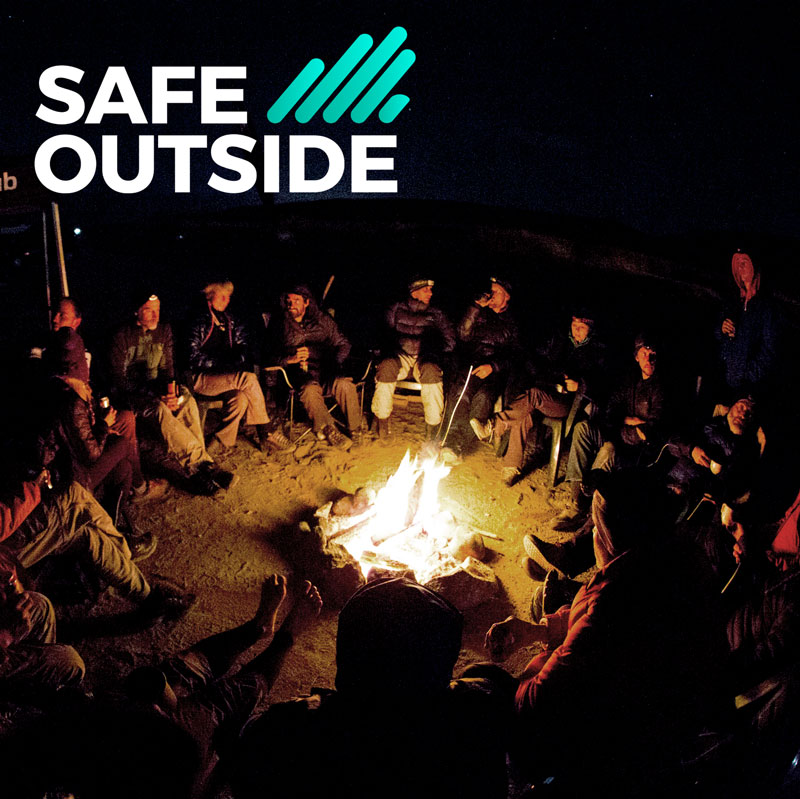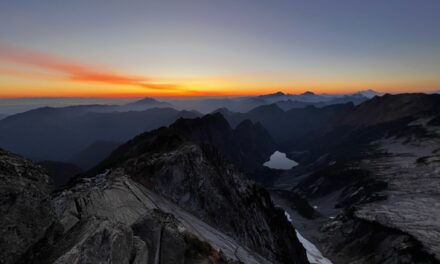- Yosemite E-Biking - 01/12/2023
- The Yosemite Climbing Association - 09/01/2022
- Ryan Sheridan & Priscilla Mewborne - 05/17/2022
Yosemite lured him in; death and conflict drove him away
As a freelancer published in the New York Times and other publications across the country, Snider’s job is to capture America’s faces and landscapes. But his work in Yosemite came with too high a price.
Yosemite Facelift is an annual five-day event that draws visitors from all over the world to enjoy the Yosemite National Park, attend events and, most importantly, pick up trash. Mixed in with the throng of visitors are locals, like photographer Dakota Snider who runs around the park capturing the action with his camera.

Exploring the Merced River near Nevada Falls.
It was here during last October’s event that he snapped a shot of professional climber and longtime local Beth Rodden, right after she’d chased down her four-year-old son Theo. That image later ran as the opening shot in the story she wrote for the New York Times called “I’m a Climber, and a Mother, and Doing Great, Thank You.”
In the photo, the crow’s feet wrinkles around her eyes magnify the fatigue she’s experienced as a parent. She’s holding her son close, his arm wrapped around her neck, his ear pressed up to her forehead. A spot of food stains her gray t-shirt.
“Theo was running around in circles and she had just picked him up,” Snider explains from his home in Mammoth Lakes, California, where today he works as the digital marketing coordinator for Mammoth Lakes Tourism. He’s responsible for taking all the photos on the website and capturing images for their social media channels.
“The spill on her shirt is natural,” Snider says. “I like to keep the photos as original to what you see as possible. That shot’s a representation of what I do.”
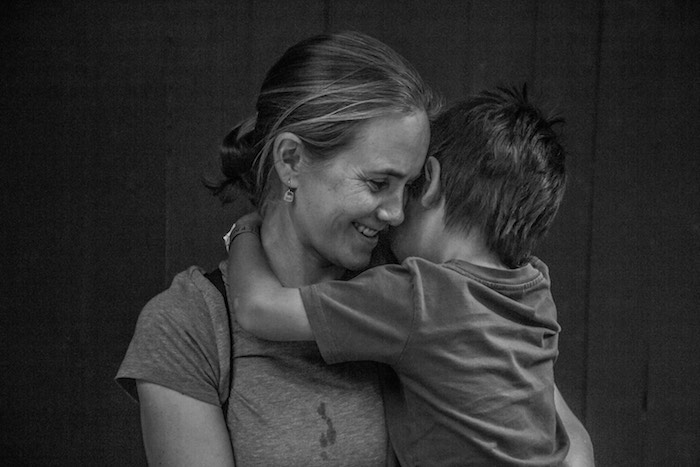
The photo of professional rock climber Beth Rodden and her son Theo that appeared in the story she wrote in the New York Times called “I’m a Climber, and a Mother, and Doing Great, Thank You.”
Landing a single photo in the Times is a dream for thousands of photographers, many who’ve immersed themselves in the trade for decades. But it was the third time for 25-year-old Snider, whose work is also in the Chicago Tribune, Los Angeles Times and Outside magazine.
“With my photos, I’m telling a story of what that moment might have been. I want it to make you think I’ve never seen it like that before. If my photo gives you a different view, then I’ve done my job.”
His posts on social media are also beautiful: a waterfall outside of Mammoth Lakes with a rainbow of light shooting through it; a cloud burst over Mono Lake; a paraglider buzzing toward Half Dome; a man in bright yellow swim trunks diving headfirst into a frigid alpine lake.
Snider says what sets his work apart from others is “that level of authenticity that is developed and earned by spending time with these people and these places. Since I was a kid it was all about these connections.”

Born in the sprawling city of Las Vegas, Snider was raised in the small city of Kingman, Arizona, where his father commuted to Nevada to work as a fire captain, as well as in search and rescue, for 30 years. His mother was a contemporary artist who made three-dimensional abstract collages. The family escaped Vegas so that Snider and his sister Tenaya (18 months older) could explore quiet mountains and wild places far away from the chaos of “Sin City.” Kingman is 100 miles southeast of Vegas and is also south of the Hualapai Indian Reservation; Kingman has no nearby towns, just a tongue of highway pavement stretching from one horizon to the next. Sandstone plateaus surround the population of 28,000. The house he was raised in was up high, at 5,000 feet, tucked in pine trees and surrounded by granite boulders near Route 66. Here his childhood was spent exploring the nearby Forest Service land and surrounding Hualapai Mountains.
Even as a young kid Snider always had an intuition for making connections. Once he had a camera in hand, during high school, he knew “when things were going down on campus. I always had a sixth sense of what people wanted to see,” he says. In high school he fell in love with photography and he tinkered with film and exposure in the darkroom for several years. He learned video on the side.
During his youth Snider and his family frequented Yosemite and the Sierra Nevada mountains. Both his parents were drawn to the park as climbers, where they’d spend days and weeks climbing with friends and family during visits. His father has reached the top of El Capitan.
While attending Arizona State, Snider continued to study film and also the art of storytelling. Midway through college, he took a class on wilderness parks in America, which led him toward studies in sustainable tourism and planning in natural places. He graduated in three years after studying film and media studies and parks and protected areas management.
Three days after earning his degree, Snider moved to Yosemite, driving the bright yellow Ram truck he had since he was 16. During college he was tipped to a job there after a chance meeting with the manager of marketing in Yosemite; she helped him secure a position for the concessionaire as a naturalist. Though two-thirds of concession workers leave during the winter, he chose to stay and he picked up hours as a ski instructor. He also took photos on the side, which slowly turned into his job there. The concessionaire paid him to take photos in the park and post shots to social media to help drive tourism.
“I just knew I wanted to be there. Yosemite was calling me,” he says.
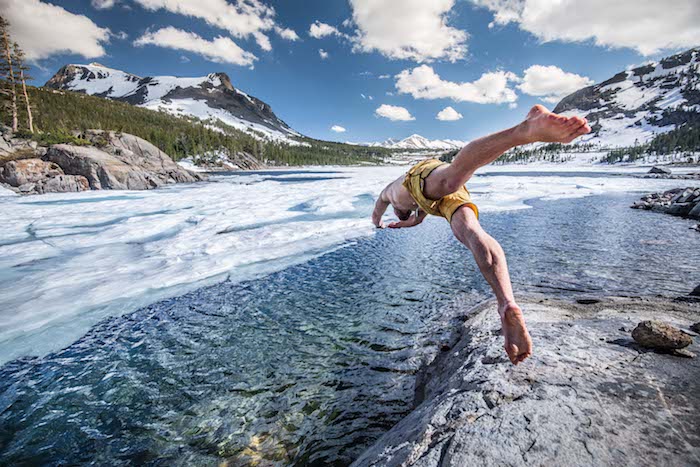
Brave swimmer Mitchell Quiring jumping into the partially thawed Tioga Lake near Yosemite National Park.
His schedule required that he work four days a week, ten hours a day, which provided him plenty of free time to develop his photography skills. As the years passed and his photos improved, he was able to take on less naturalist work and pile on more photo work, eventually reaching equilibrium. His last year in the park he worked 20 hours a week doing photography and 20 hours with ski patrol.
He also got onto the Associated Press contact list, positioning himself as a Yosemite correspondent, which led to additional freelance opportunities. He’s since been published nationwide, but he’s most pleased with his three shots in the New York Times. His other two shots in their publication — all captured in Yosemite — include one taken during a search and rescue operation of a patient being loaded into a helicopter in El Cap meadow; the other is a shot of the iconic Firefall, Yosemite’s natural phenomenon. That’s the name given to El Capitan’s Horsetail Fall when it catches last light during late February as light hits the water cresting off the rock’s summit. The droplets that are wisping from the rock burn a deep orange. Thousands of people line up to get this shot annually.
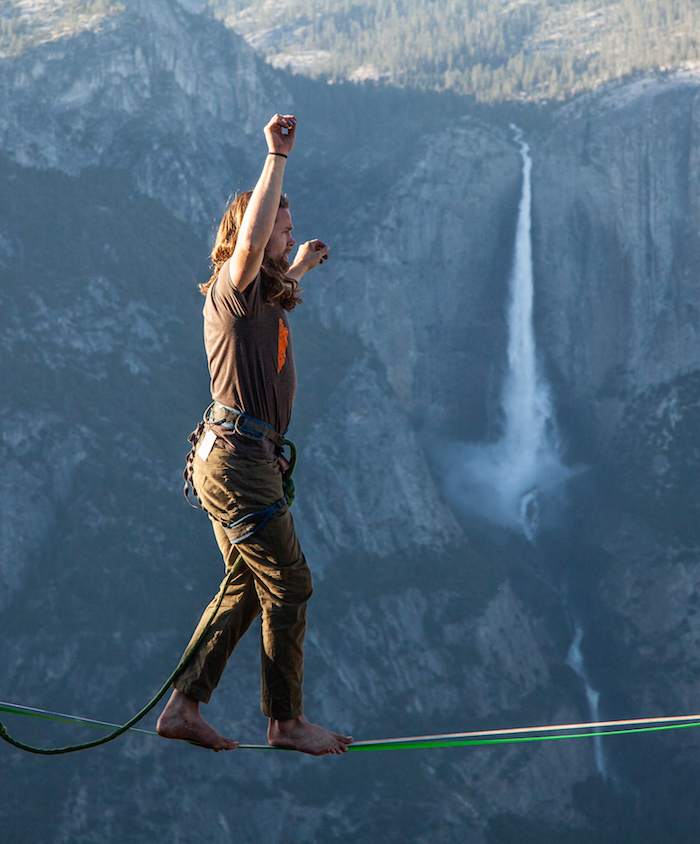
A highliner walks a line at Taft Point with Upper Yosemite Falls seen in the distance.
The lifestyle came with its pros. It also came with its cons.
Working for the Yosemite concessionaire, Snider explains, is like going to an adult summer camp or a college in the mountains, but instead of going to class you get paid to go to work. Employees are crammed two to three into small canvas tent cabins or into studio apartments. Drinking cheap malt liquor and rolling cigarettes by the river is a ritual for many seasonal workers.
Many workers stay in their same position for decades, and those that don’t leave earn the title “Lifer,” which is as much a life sentence as it is a blessing.
“I was never a Lifer,” Snider says. “That was never my calling.”

Henry Feder on the first ascent of his new Yosemite route, Killa Beez 4 pitch 5.12a.
Last autumn when I met Snider, he’d just finished up a day shooting one of the top climbers in the area on a difficult climb near Vernal Fall. We met at night while volunteering for Facelift, where we raised stage lights for an upcoming dance party.
After that night on the stage, he disappeared.
When we caught up months later he said he was leaving the park and that his best friend and partner for five years passed away in a motorcycle accident. Breanne was in a hit and run, he said, and she had been his closest person for the last five years. They met during Snider’s sophomore year in college and traveled all around the world together. They worked side by side together in Yosemite.
“She believed in me so much,” he says. “She believed I could do better than teaching skiing and shooting on the side.” But there was something else driving him away too. As the seasons change, Yosemite can be a damp, lonely place. In winter, due to the orientation of the sun over the narrow valley, parts of the park only receive one hour of direct sunlight per day. That’s where Snider lived. “It becomes a trench in winter. That takes a huge toll on your mental health.”
“The final straw came during the government shut down in December and January when the concession told me it was ‘business as usual,’” he says.
Having a background in protecting park resources put him at odds with his employer who expected him to put his moral views to the side and encourage visitation despite the massive reduction in park service personnel who would normally be there to help protect the park from the people. The trash piled up on the trails, areas were damaged, but he was told the show must go on. Since all concession workers have to sign a form when hired saying they won’t talk with the media, he was unable to share his frustrations with the greater public.
“I tried to hold myself to the level Bre would have held me to, but it came to the point of working for a for-profit company in a preserved area that I recognized that the morals I had were not in alignment with the corporation. I knew I couldn’t do what I was tasked to do.”

Hanging in the Yosemite Wilderness at Matthes Lake during a summer sunset.
“Living in Yosemite is one of the most amazing experiences you could ever have, but it comes with sacrifices.”
He started a job search, and following his networking senses, he landed his position in Mammoth Lakes. Today his images are used as inspiration for guests planning their visit. Mammoth draws people year-round for skiing and snowboarding, downhill mountain biking, climbing, and sightseeing. Unlike Yosemite, it’s not a national park.
“Now, out here, I can still do what I did in Yosemite on a daily basis and I have new subjects. And I have the White Mountains and Sherwin Mountains and the entire Sierra in my backyard,” he says.
Though he moved to Mammoth in the dead of winter (one that brought 200 percent of the annual snowfall), his recent shot of his friend diving headfirst into a clear blue mountain lake on Tioga Pass — the surface of the water half covered in snow with the other half clear and reflecting the open sky above — symbolizes his transition.
“I still wanted to be in the heart of preservation and to be in the Sierra Nevada, and when this job opened up in Mammoth, it felt like the perfect thing.”
Now in a town of 8,000 year-round residents instead of the 2,000 in Yosemite, he has more options to live his life, grow his work and follow his passion. And instead of sharing an 11-foot by 11-foot cabin, he’s in his own home on a quarter-acre lot. “I wouldn’t trade that time in Yosemite for anything. But now I have my own place, my own property, and that feels good,” he says.
“My job here requires that I take photos of every event. And when wildflowers are blooming, I’m taking pics of them all day. Last week was chaos. It was the 4th of July and I had to be in a million places at once taking photos.”
Today his Instagram page remains filled with Yosemite shots, but also the Tuolumne high country, Mammoth Lakes and Mono Lake. A recent post shows clouds whipping around Half Dome, the dome’s visor and its south face poking out from the white exposing the rock’s iconic curves.
“In one sense my art has changed,” he says. “Today I take landscape, adventure, action shots, commercial photography work and everything in between.”

Capturing the true vastness of the south rim of The Grand Canyon is never an easy task.
To learn more about Dakota Snider, follow him on his website dsniderphoto.com and on Instagram @dakotasnider.
Read more stories by Chris Van Leuven here.





